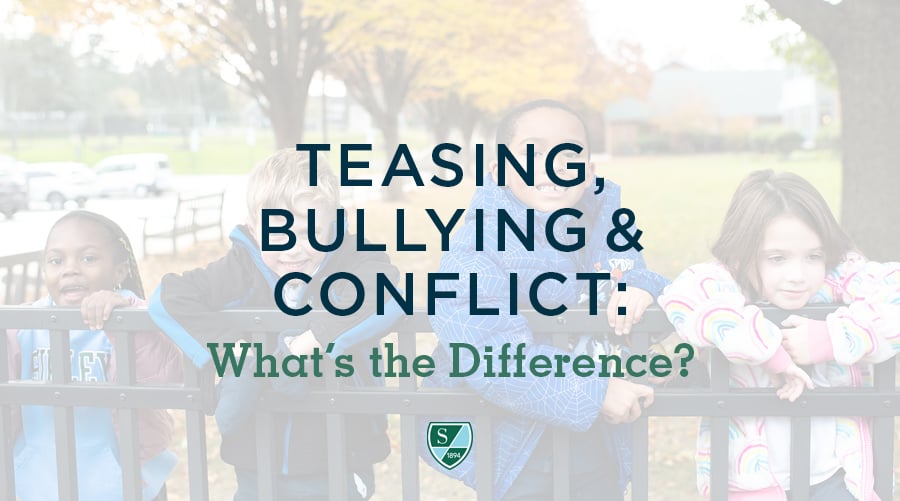The third grader was pensive as he described interactions with a classmate. “My mom is really upset because she thinks I’m being bullied,” he told me, “but I think I’m being teased.” Turns out, he was right!
The words teasing, bullying, and conflict are often used interchangeably, but they describe three different types of interactions. Understanding the specific behaviors that define each can help parents coach kids about the best ways to respond.
So, what’s the difference?
Teasing is sometimes playful, sometimes hurtful, and usually annoying words and actions that make fun of another person. While teasing may happen between children who are not friends, it also occurs between children who play together and may even be good friends. When kids are teased, they may feel annoyed, frustrated, sad, hurt, angry, or upset.
Because teasing is often done to get a reaction or attention, strategies such as under-reacting or ignoring often put an end to teasing. Coach your child how to actively ignore teasing by not making eye contact, turning their attention to someone else, and not responding. You can also help your child not internalize the teasing by teaching them to use positive self-talk—for example, “I know that’s not true. That person is just trying to get a reaction.”
But what if the teasing escalates? Or if a child is feeling not annoyed, but scared?
Bullying is intentionally aggressive behavior that is persistent, hurtful, and involves a power imbalance between the person doing the bullying and the target. This power imbalance can be physical strength or size, or social power. Bullying can be done individually or in a group, and involves the threat of or actual physical and/or emotional harm. Types of bullying behavior include verbal (using words to hurt or intimidate); physical (harming a person’s body or possessions); social (intended to hurt someone’s social relationships or reputation); and cyber (harming others over a device).
Targets of bullying feel intimidated, scared, isolated, and/or humiliated. While many adults (and kids) fear that reporting bullying may “make it worse,” research does not support this belief. Bullying is powerful in part because it is often unreported, and therefore continues unchecked. Anti-bullying laws and school policies exist because bullying is serious behavior with significant negative consequences, and rarely stops without adult intervention. Children who experience or witness bullying are encouraged to stand up to bullying and report it, but parents should contact the school immediately if bullying occurs at school.
The truth is that many challenging interactions between children are conflicts, rather than teasing or bullying. Conflicts are arguments, disagreements, or fights between people and an inevitable part of human relationships. While a one-time event of two children fighting is not bullying, conflicts that involve hurtful names, threats, or physical aggression still require adult intervention.
As parents, we may be tempted to solve conflicts for our children, but resolving conflicts peacefully is one of the most important social skills kids learn. When adults react calmly to the challenges that kids share, validate their feelings, identify the problem, and help brainstorm strategies, we help children become skilled social problem-solvers with healthy friendships and positive peer interactions.










